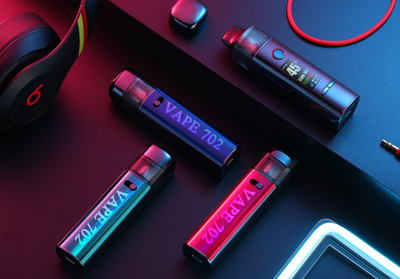for wholesale

Vaping Marketing Restrictions: Impact on Industry Practices
Overview of Vaping Marketing Restrictions
The landscape of vaping marketing is heavily influenced by stringent regulations designed to limit the appeal of these products, especially to minors. Restrictions commonly include bans on advertising in certain channels such as television, radio, and public spaces, stringent controls over the content of advertisements to avoid appealing imagery for youths, and severe limitations on the language used to avoid presenting vaping as a healthier alternative to smoking without substantial evidence. These measures aim to reduce the visibility and attractiveness of vaping products to a younger audience, ensuring that the marketing efforts are directed solely towards adult smokers.

Recent Legislative Actions and Proposals
Globally, governments have been tightening the noose on how vaping products can be marketed. In the U.S., the FDA has implemented policies that restrict the sale and promotion of flavored vaping products, which are particularly appealing to younger users. In Europe, similar strides are being made with the EU Tobacco Products Directive, which regulates the size, presentation, and safety of vaping products. On the horizon are proposals aiming to further restrict online marketing, an area still somewhat nebulous in terms of regulation but crucial due to its accessibility to underage users.

Impact on Industry Advertising Strategies
Vaping companies are finding themselves needing to pivot their marketing strategies significantly in response to these restrictions. There's a noticeable shift towards more subdued, informative advertising focused on harm reduction for existing smokers rather than lifestyle promotion. This includes greater emphasis on direct marketing channels, such as email, where companies can implement stricter age verification processes, and content that is closely aligned with regulatory requirements, focusing on product specifics over lifestyle associations.
Challenges Faced by Vaping Businesses
The restrictions have imposed significant challenges on vaping businesses, primarily affecting brand visibility and customer acquisition. New and smaller brands find it particularly difficult to gain traction in a market where advertising opportunities are limited. The ability to engage with potential new customers is curtailed, pushing companies to find innovative yet compliant ways to market their products and grow their customer base.

Opportunities for Compliance and Innovation
Despite these challenges, there are substantial opportunities for innovation. Companies are increasingly focusing on improving product quality and safety, which can be highlighted in their marketing strategies. Furthermore, the shift towards digital and direct-to-consumer marketing platforms allows businesses to leverage data analytics for more targeted marketing, ensuring compliance and enhancing customer experience by providing tailored product recommendations and content.
Consumer Awareness and Perception
The implementation of stringent marketing restrictions has significantly shaped consumer awareness and perception of vaping products. On one hand, these restrictions serve a vital public health purpose by shielding non-smokers and particularly younger audiences from vaping advertisements. This protective measure aims to reduce the allure and accessibility of vaping, potentially curbing initiation rates among these groups. The reduced exposure to promotional content is critical in preventing the normalization of vaping as an acceptable or trendy habit among the youth.
However, these same restrictions can also hinder the spread of information to adult smokers who may be considering vaping as a less harmful alternative to smoking traditional cigarettes. With limited marketing channels and strict regulations on advertising content, smokers may find it challenging to access detailed and balanced information about vaping products. This information gap could impede their ability to make well-informed decisions, affecting their transition to potentially less harmful alternatives. As a result, the restrictions, while protective for some, might inadvertently limit access to alternative options for those actively seeking to change their smoking habits.
Regulatory Outlook and Industry Response
As we look to the future, further regulatory changes are anticipated, particularly in areas that have been less addressed, such as online advertising and international marketing standards. These anticipated regulations will likely require even more sophisticated compliance strategies from vaping companies. The industry's response has so far been proactive, with many companies investing in regulatory technology to ensure ongoing compliance and engaging in dialogue with policymakers to shape sensible regulations that support public health goals without stifling innovation. This proactive approach not only helps companies stay ahead of regulatory challenges but also demonstrates their commitment to responsible business practices and consumer safety.
Conclusion and Implications
The wave of marketing restrictions on vaping products has reshaped the industry’s practices significantly. While these measures pose substantial challenges, they also drive innovation and ensure that marketing efforts are responsibly directed. As the regulatory landscape continues to evolve, the industry's ability to adapt will be crucial in determining its sustainability and growth. The implications of these changes reach beyond the industry, affecting public health policy, consumer behavior, and the broader cultural acceptance of vaping as an alternative to smoking.

